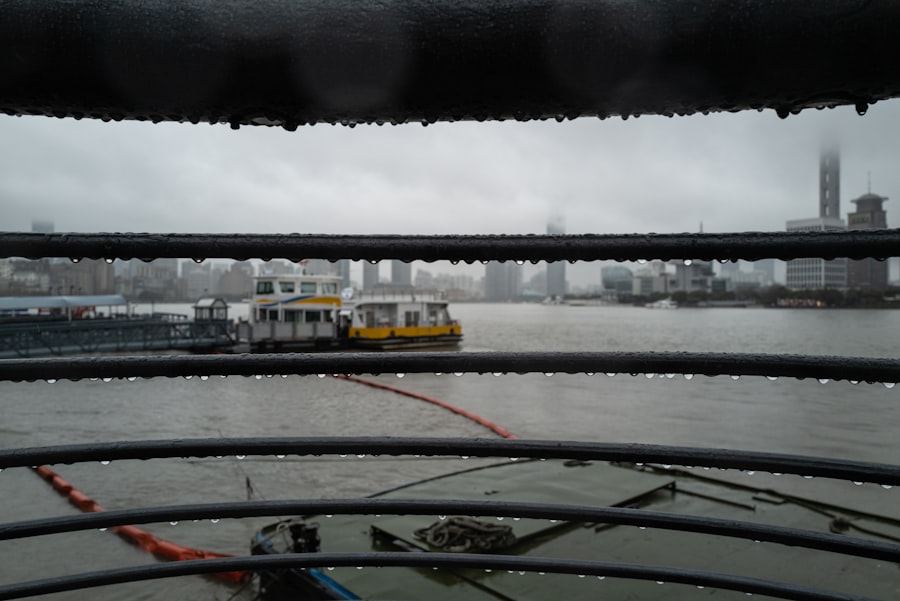The Drake Passage, a body of water that separates South America from Antarctica, is renowned for its tumultuous seas and unpredictable weather. Named after the English explorer Sir Francis Drake, who navigated these waters in the late 16th century, the passage has become a focal point for maritime navigation and scientific exploration. Stretching approximately 800 kilometers (500 miles) from Cape Horn to the South Shetland Islands, the Drake Passage is not only a critical route for vessels traveling between the Atlantic and Pacific Oceans but also a unique ecological zone that plays a significant role in global oceanic systems.
The passage is often characterized by its rough waters and strong currents, making it both a challenge and an adventure for sailors. The confluence of the Atlantic and Pacific Oceans creates a dynamic environment where weather patterns can shift rapidly, leading to conditions that can be both exhilarating and perilous. For many, traversing the Drake Passage is a rite of passage, a test of skill and endurance that has captured the imagination of adventurers and researchers alike.
As such, understanding the complexities of this waterway is essential for anyone looking to navigate its waters or study its ecological significance.
Key Takeaways
- Drake Passage is a narrow body of water between South America’s Cape Horn and the South Shetland Islands of Antarctica.
- It is the shortest route between the Atlantic and Pacific Oceans, making it a crucial shipping lane and a popular route for scientific research expeditions.
- The passage is known for its strong winds, large waves, and unpredictable weather patterns, making it one of the most challenging maritime routes in the world.
- The region experiences cold temperatures and high precipitation, with the potential for extreme weather events such as blizzards and storms.
- The unique oceanographic and climatic conditions of Drake Passage support a diverse range of marine life, making it an important area for ecological research and conservation efforts.
Geographic Location and Significance
Geographically, the Drake Passage is situated at the southernmost tip of South America, bordered by the rugged terrain of Cape Horn to the north and the icy expanse of Antarctica to the south. This strategic location serves as a natural gateway between two major oceans, facilitating maritime trade and exploration. The passage is not merely a geographical feature; it is a vital conduit for ocean currents that influence global climate patterns.
The Antarctic Circumpolar Current, which flows through the Drake Passage, is the world’s largest ocean current and plays a crucial role in regulating temperatures and nutrient distribution across the Southern Hemisphere. The significance of the Drake Passage extends beyond its geographical features. It serves as a critical habitat for various marine species, including whales, seals, and seabirds.
The nutrient-rich waters support a diverse ecosystem that thrives in this unique environment. Additionally, the passage has historical importance as a route for explorers and researchers who have sought to understand the mysteries of Antarctica. Its challenging conditions have made it a site of numerous maritime adventures, contributing to our understanding of navigation and oceanography.
Climate and Weather Patterns

The climate of the Drake Passage is characterized by its extreme variability, influenced by its geographic location and proximity to Antarctica. The region experiences a maritime climate with cool temperatures year-round, but conditions can change rapidly due to shifting weather systems. The passage is often shrouded in fog, with frequent storms that can arise with little warning.
These unpredictable weather patterns are a result of the interaction between cold polar air masses and warmer air from the south, creating a dynamic atmosphere that can lead to severe weather events. In addition to storms, the Drake Passage is known for its strong winds, which can reach gale force levels. These winds contribute to the formation of large waves that can pose significant challenges for vessels navigating through the area.
The combination of cold temperatures, high winds, and rough seas creates an environment that demands respect and caution from mariners. Understanding these climate patterns is essential for anyone planning to traverse the passage, as they can greatly impact travel times and safety.
Wind and Wave Conditions
| Date | Wind Speed (mph) | Wave Height (ft) |
|---|---|---|
| 01/01/2022 | 15 | 3 |
| 01/02/2022 | 20 | 5 |
| 01/03/2022 | 10 | 2 |
Wind conditions in the Drake Passage are notoriously fierce, with prevailing westerly winds often reaching speeds that can exceed 50 knots. These winds are driven by the unique geography of the region, where the landmass of South America meets the open ocean. As air flows over the land and into the water, it can create turbulent conditions that lead to large swells and choppy seas.
Mariners must be prepared for sudden changes in wind direction and intensity, which can dramatically affect navigation and vessel stability. The wave conditions in the Drake Passage are equally formidable. The combination of strong winds and open water allows waves to build to impressive heights, sometimes reaching over 30 feet during storms.
These towering waves can create hazardous conditions for even the most experienced sailors. The unpredictable nature of wave patterns means that vessels must be equipped to handle rough seas, with proper safety measures in place to ensure crew and passenger safety. Understanding wind and wave dynamics is crucial for successful navigation through this challenging waterway.
Temperature and Precipitation
Temperature variations in the Drake Passage are influenced by its proximity to Antarctica, resulting in generally cool conditions throughout the year. Average sea surface temperatures range from about -2°C (28°F) in winter to around 8°C (46°F) in summer. These temperatures can fluctuate significantly due to ocean currents and atmospheric conditions, leading to localized variations that can impact marine life and navigation.
Precipitation in the Drake Passage is also notable, with rain and snow occurring throughout the year. The region receives an average annual precipitation of around 1,000 millimeters (39 inches), primarily in the form of rain during the warmer months and snow during winter. This precipitation contributes to the unique ecosystems found in and around the passage, supporting diverse marine life while also influencing weather patterns across southern South America.
Mariners must be aware of these temperature and precipitation trends when planning their journeys through this challenging environment.
Impact on Wildlife and Ecosystem

The Drake Passage is home to a rich diversity of wildlife that thrives in its nutrient-rich waters. The confluence of cold Antarctic waters with warmer currents creates an ideal environment for phytoplankton blooms, which serve as the foundation of the marine food web. This abundance of nutrients attracts various species of krill, fish, and other marine organisms, making it a vital feeding ground for larger predators such as seals, whales, and seabirds.
The passage serves as a migratory route for many marine animals, providing essential habitats for breeding and feeding. However, this delicate ecosystem faces challenges from climate change and human activities such as fishing and shipping traffic.
Understanding the impact of these factors on wildlife populations is crucial for conservation efforts aimed at preserving this unique marine environment.
Importance for Scientific Research
The Drake Passage has long been recognized as an important site for scientific research due to its unique ecological characteristics and role in global ocean circulation. Researchers from around the world flock to this region to study everything from marine biology to climate science. The passage serves as a natural laboratory for understanding how ocean currents influence weather patterns and climate change on a global scale.
In addition to oceanographic studies, the Drake Passage provides valuable insights into marine ecosystems and biodiversity. Scientists conduct research on species distribution, population dynamics, and ecological interactions within this complex environment. The data collected from these studies contribute to our understanding of how climate change impacts marine life and inform conservation strategies aimed at protecting vulnerable species in this critical habitat.
Challenges for Navigation and Travel
Navigating through the Drake Passage presents numerous challenges due to its unpredictable weather conditions and treacherous waters. Mariners must contend with strong winds, large waves, and rapidly changing weather patterns that can make even experienced sailors uneasy. The passage’s reputation for rough seas has led many to regard it as one of the most challenging maritime routes in the world.
In addition to natural obstacles, vessels must also be aware of potential hazards such as icebergs drifting from Antarctica or shipping traffic in busy areas. Proper planning and preparation are essential for ensuring safe passage through this region. Mariners often rely on advanced navigation technology and weather forecasting tools to help mitigate risks associated with traversing these tumultuous waters.
Safety Considerations for Mariners
Safety is paramount when navigating through the Drake Passage due to its challenging conditions. Mariners must be well-prepared with appropriate safety equipment onboard their vessels, including life jackets, emergency beacons, and communication devices capable of functioning in remote areas. Crew training is also essential; all hands should be familiar with emergency procedures in case of sudden weather changes or equipment failures.
Additionally, understanding weather forecasts is crucial for ensuring safe travel through the passage. Mariners should stay informed about current conditions and potential storms that may arise during their journey. By taking proactive measures to prioritize safety, sailors can better navigate this formidable waterway while minimizing risks associated with its unpredictable nature.
Weather Forecasting and Monitoring
Accurate weather forecasting plays a vital role in ensuring safe navigation through the Drake Passage. Meteorologists utilize advanced technology such as satellite imagery, buoys, and weather models to monitor atmospheric conditions in real-time. This data allows them to predict changes in wind patterns, wave heights, and potential storm systems that could impact vessels operating in this region.
Many vessels now incorporate sophisticated weather monitoring systems onboard that provide real-time updates during transit. By leveraging these tools alongside traditional forecasting methods, sailors can make informed decisions about their routes while enhancing safety measures against adverse weather conditions.
Future Implications for Climate Change
As climate change continues to impact global weather patterns, its effects on regions like the Drake Passage are becoming increasingly evident. Rising sea temperatures may alter marine ecosystems by affecting species distribution and food availability for predators reliant on specific prey types such as krill or fish populations within these waters. Additionally, changes in precipitation patterns could lead to shifts in ocean currents that influence global climate systems beyond just local effects within this region alone.
Understanding how these changes will unfold over time is critical for scientists studying both environmental impacts on wildlife populations as well as broader implications for human activities reliant upon stable maritime routes through areas like the Drake Passage. In conclusion, while navigating through this challenging waterway presents numerous obstacles—from unpredictable weather conditions to safety concerns—its significance cannot be overstated when considering its role within our planet’s interconnected systems both ecologically speaking as well as economically speaking via maritime trade routes linking continents together across vast distances!
If you’re planning a journey through the Drake Passage, it’s crucial to stay updated on the current weather conditions, as this region is notorious for its unpredictable and often harsh weather. For those interested in learning more about navigating this challenging maritime route, you might find this related article on the Drake Passage and its weather patterns insightful. You can read more about it on MyGeoQuest’s detailed page, which provides valuable information for adventurers and sailors alike.
WATCH NOW! Drake Passage: Earth’s Deadliest Waters Revealed
FAQs
What is the current weather in the Drake Passage?
The current weather in the Drake Passage can vary, but it is known for its unpredictable and often harsh conditions. It is common to experience strong winds, rough seas, and rapidly changing weather patterns in this region.
What are the typical weather conditions in the Drake Passage?
The Drake Passage is known for its strong westerly winds, high waves, and cold temperatures. Storms and low-pressure systems are frequent in this area, making it one of the most challenging maritime routes in the world.
Is it safe to travel through the Drake Passage in the current weather conditions?
Traveling through the Drake Passage can be challenging and potentially dangerous due to the unpredictable weather conditions. It is important for travelers to be well-prepared and to follow the guidance of experienced captains and crew members.
Are there any weather advisories or warnings for the Drake Passage?
It is common for weather advisories and warnings to be issued for the Drake Passage due to the extreme weather conditions. Travelers should stay informed about any advisories and follow the recommendations of local authorities and maritime agencies.
What should travelers expect when crossing the Drake Passage in the current weather?
Travelers should expect rough seas, strong winds, and potentially stormy conditions when crossing the Drake Passage in the current weather. It is important to be prepared for motion sickness and to follow safety protocols while at sea.
